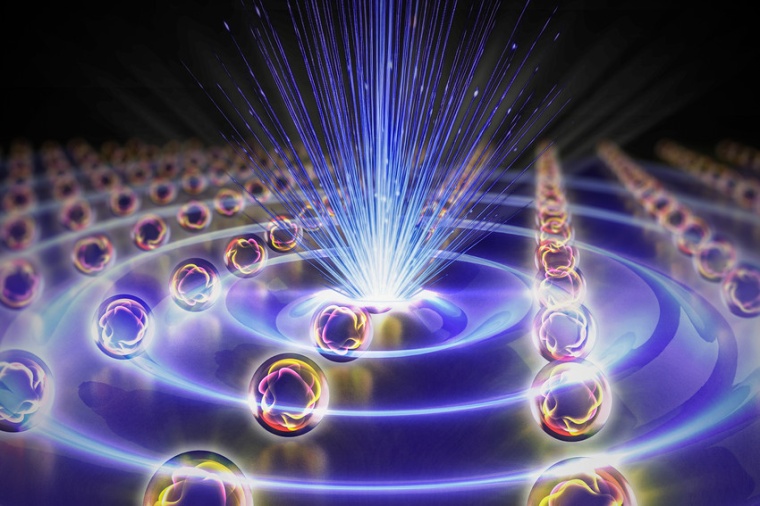Controlling light with photonic time crystals
A new discovery could dramatically enhance technologies like lasers, sensor, and optical computing in the near future.
An international research team has for the first time designed realistic photonic time crystals – exotic materials that exponentially amplify light. This unconventional approach opens up exciting possibilities across fields such as communication, imaging and sensing by laying the foundations for faster and more compact lasers, sensors and other optical devices.

“This work could lead to the first experimental realization of photonic time crystals, propelling them into practical applications and potentially transforming industries. From high-efficiency light amplifiers and advanced sensors to innovative laser technologies, this research challenges the boundaries of how we can control the light-matter interaction,” says Viktar Asadchy from Aalto University in Finland.
Photonic time crystals represent a unique class of optical materials. Unlike traditional crystals, which have spatially repeating structures, photonic time crystals remain uniform in space but exhibit a periodic oscillation in time. This distinctive quality creates “momentum band gaps,” or unusual states where light pauses inside the crystal while its intensity grows exponentially over time. To grasp the peculiarity of light’s interaction within a photonic time crystal, imagine light traversing a medium that switches between air and water quadrillions of times per second – a remarkable phenomenon that challenges our conventional understanding of optics.
One potential application for the photonic time crystals is in nanosensing. “Imagine we want to detect the presence of a small particle, such as a virus, pollutant, or biomarker for diseases like cancer. When excited, the particle would emit a tiny amount of light at a specific wavelength. A photonic time crystal can capture this light and automatically amplify it, enabling more efficient detection with existing equipment,” says Asadchy.
Creating photonic time crystals for visible light has long been challenging due to the need for extremely rapid yet simultaneously large-amplitude variation of material properties. To date, the most advanced experimental demonstration of photonic time crystals – developed by members of the same research team – has been limited to much lower frequencies, such as microwaves.
In their latest work, the team proposes, through theoretical models and electromagnetic simulations, the first practical approach to achieving “truly optical” photonic time crystals. By using an array of tiny silicon spheres, they predict that the special conditions needed to amplify light that were previously out of reach can finally be achieved in the lab using known optical techniques. (Source: Aalto U.)
Link: Designer Materials and Devices, Aalto University, Espoo, Finland











